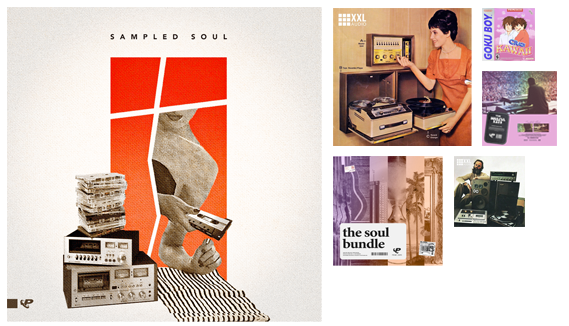
Wanna make the most out of some old analog gear that doesn't work quite right?! This week, we're looking at the technique of multisampling. And no, we ain't chatting about using two different accapellas in the same track. Multisampling can be way more handy, and can help you get the best out of any sound source that you might have at your disposal. Interested? Then read on...
What is Multisampling?
In essence, multisampling is taking a single sample - where you record some audio into your computer and throw it into a sampler - but doing this several times over. Typically, you'd do this with a synth; record several notes into the computer, then split up the audio and map the separate hits properly across the keyboard.
Why Use Multisampling?
There are plenty of reasons why multisampling can be a useful technique. For a start, old analogue synths generally have no polyphony - which means no chords, no harmonies, and no notes tailing off delicately while you play another. But if you're working with samples, you can play as many notes as your computer's RAM will handle. You've just upgraded that classic synth in one fell swoop!
On top of that, most old analogue synths have no presets. If you find a great sound, you would normally have no way of saving it for future use. Multi-sampling the sound can solve that problem.
It also means you can avoid the vagaries of unreliable analogue equipment losing tuning. If you've ever wanted to be able to get those synth sounds going at a friend's studio without having to lug expensive kit across town, this is the way forward.Or on the flipside, if you know someone with a great synth, you can head round to their place with a laptop and a soundcard, and capture some of that sonic goodness for your own use later.
Tips for Successful Multisampling
When you're multisampling, the first thing to do is make sure you're getting a decent level into the computer. This multi-sample is something that will hopefully stand you in good stead for many tunes to come, so it needs to be versatile. As such, you want a good clean sound, strong signal to noise ratio, and as little hiss as possible. If you want hiss in a particular track, it's always easy to add in later, but it's hard to remove!
Be careful not to clip the sound though. A little overdriving can sound good if you've got some decent kit, but again, that's something you can do at a later stage. Better to get a solid level and then normalise it up to 0dB for now.
Getting the Most Use From Multisampling
Think about the sound you're recording in and how to make it most useful. As far as volume envelopes go, it's often useful to have almost zero attack - so that the sound comes straight in at full volume. This might sound odd, especially if it's for a smooth string sound but you'll find it beneficial when programming your sampler later on. You'll find it's much easier to add a slow attack on the envelope if you need one, rather than making the sample start halfway through without a click.
Similarly, it's easier to filter out high frequencies with your sampler, than trying to add them into a sound that you recorded with the filter already down.
Creating Great Sounds Using Multisampling
Now, you need to hit each note in turn. Play each note on the keyboard in order (this will save lots of time later). Leave plenty of time for each note to tail off before you hit the next one. Again, think about how long you need the notes to be. If it's for a pad sound, obviously you'll need to hold the key down for a good two or three seconds each time.
The next stage is chopping up the audio. This is the boring bit because, while you can use an automated tool like Recycle, or Logic's 'Strip Silence' function, they frequently don't get close enough to the start of the sample if there is no defined transient. Or worse, they start too late and miss off the start of the sample!
So although starting with one of these programs will save you time, you should then go in and tailor each one - yep, we said it was the boring part - to make sure everything sounds consistent for when you're playing it back later.
Once you've got everything in place, it's a case of mapping things on your sampler. This is straightforward enough, but make sure it doesn't set the samples to 'one-shot'. You'll need to be able to play long or short notes if necessary.
Then, use the sampler's filters, envelopes and pitch control to create your sound. You'll have a patch that keeps all the sonic warmth of your original synth sound, but with polyphony, portamento, filters and the ability to stack several 'synths' up at once. It should be pretty clear by now why multisampling can be so useful.
Get Inspired
Although it can be fiddly, it's a technique worth trying. For those times when you're producing on the move, or are just feeling lazy, it's great to have more to draw on than just the patches that came with your DAW.
So, plug in that soundcard, and get sampling!
